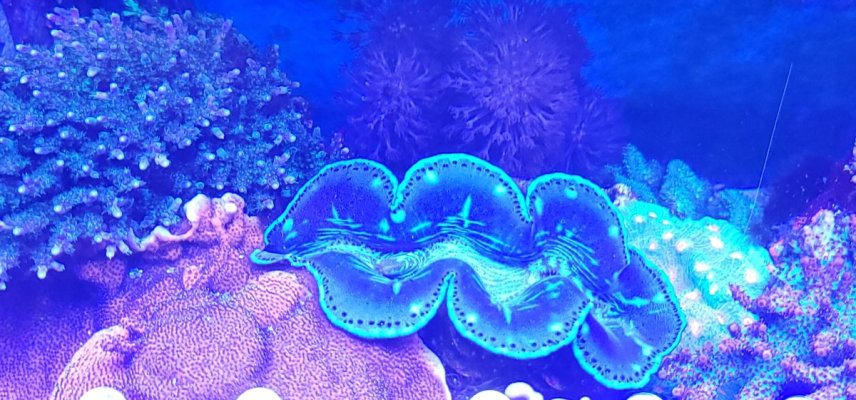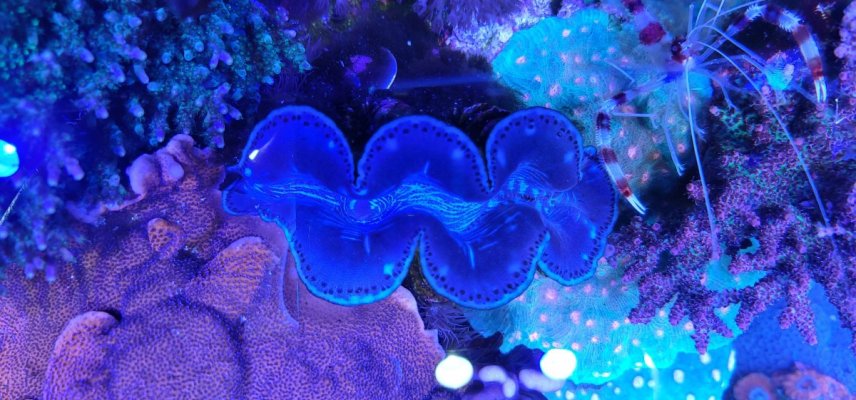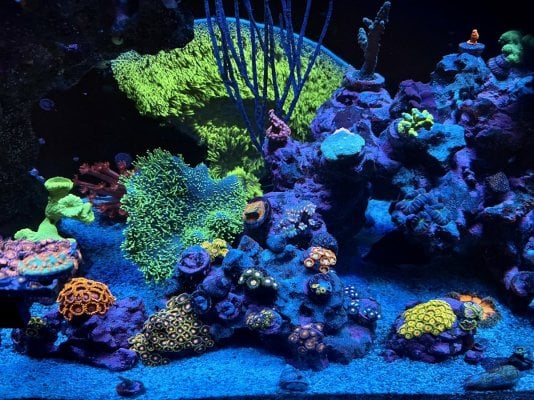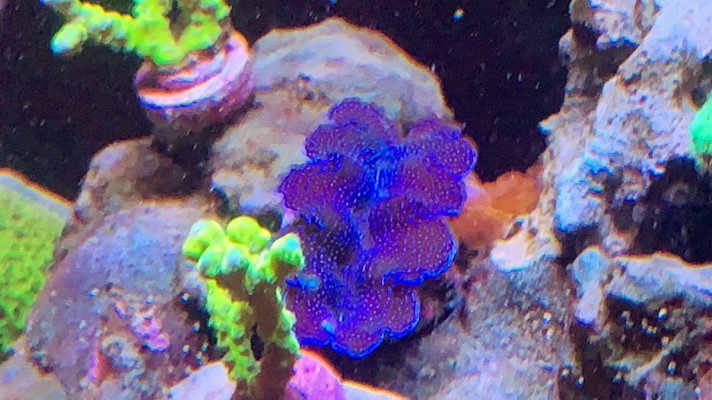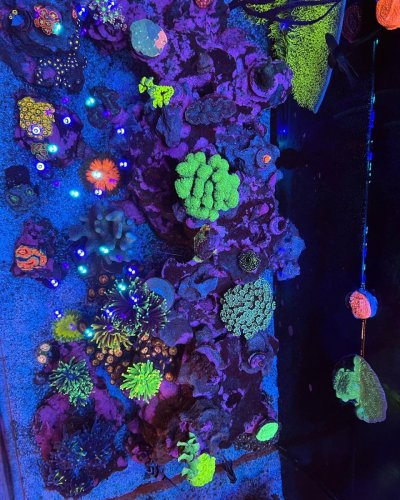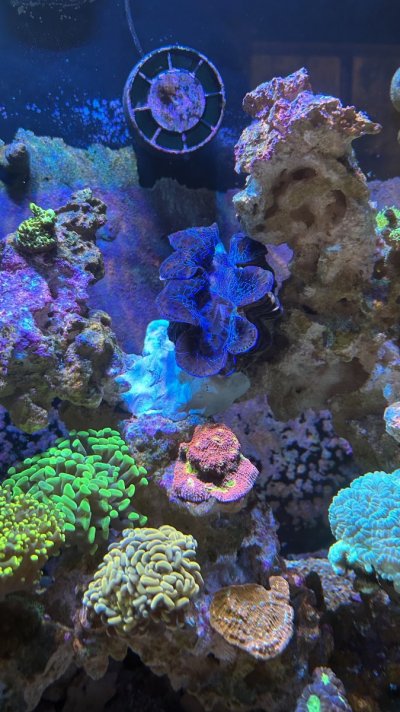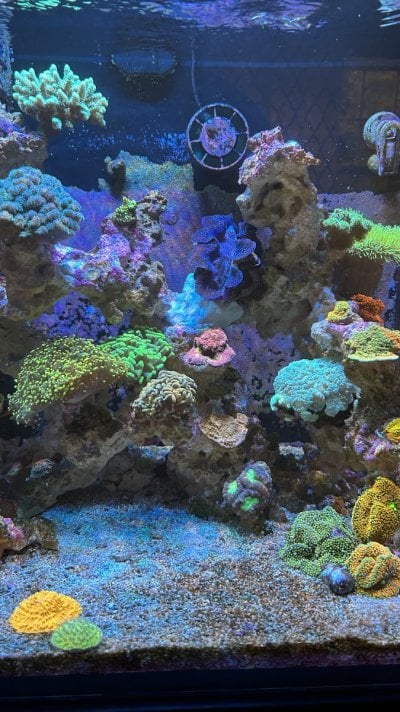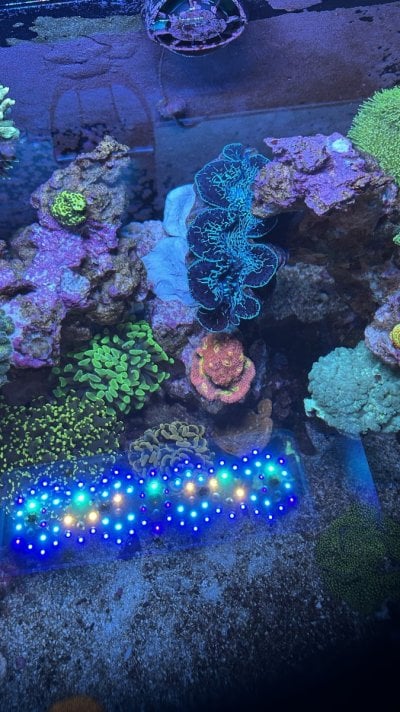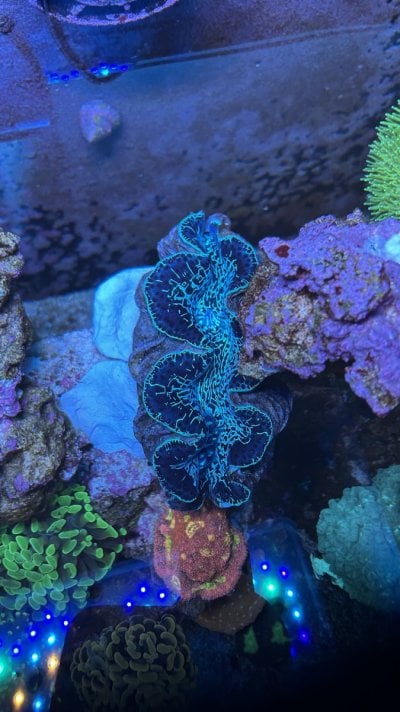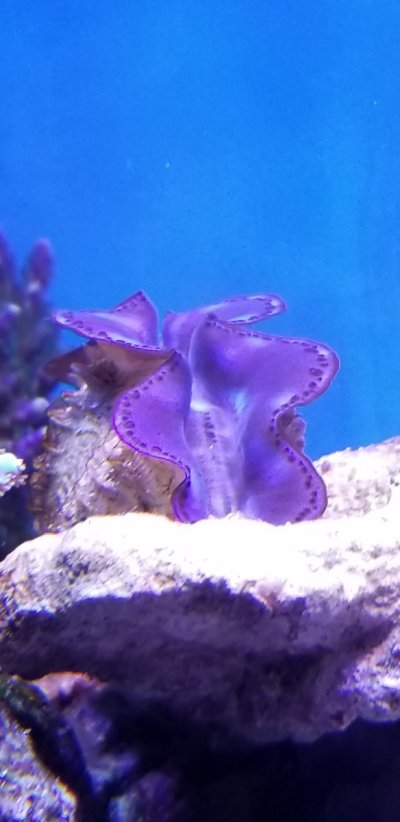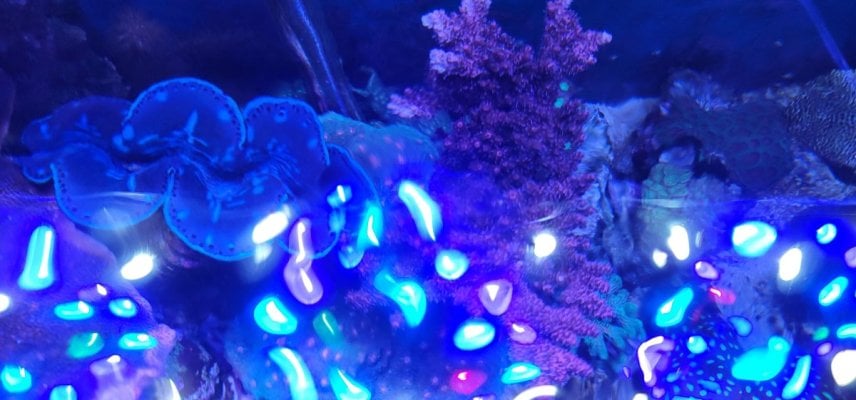I agree clams falling down is a good way to kill them.Clams need to be up top and adult clams won‘t attach with their foot.
A quick sure fire way to kill a clam is by having it fall down every time.
Why do you say an adult won't attach to the rock? If you give it the exact flow they like and lighting and it's completly happy, it will attach. If one thing it doesn't like, it will try to shift itself.
Gluing is like gluing a newborn in its crib to prevent it from falling out.
Since we are posting pics...
